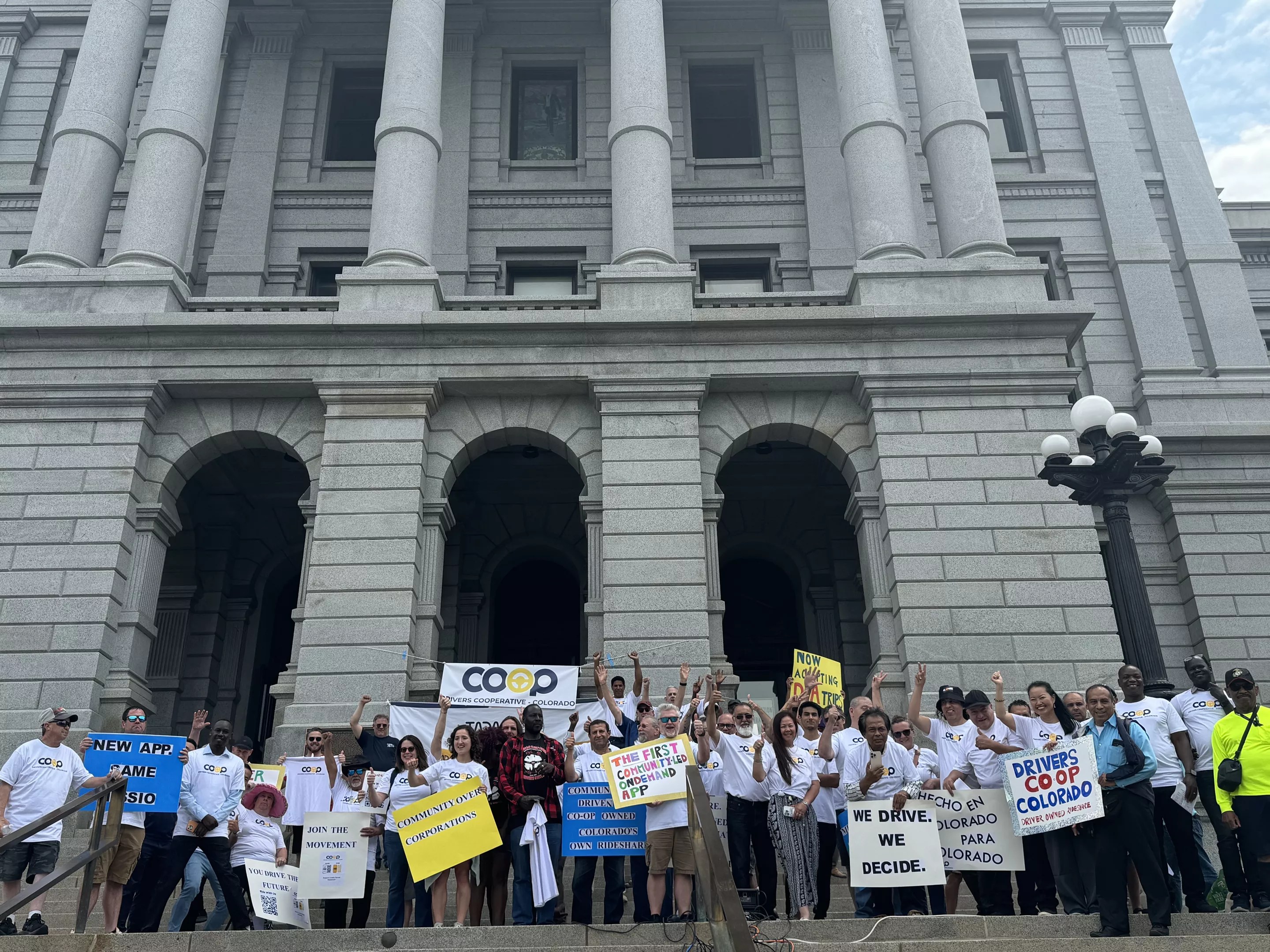
Unsplash/Melissa Mjoen

Audio By Carbonatix
Driver’s Cooperative Colorado is officially back on, re-launching today, July 16, with an improved app and discounted rides.
The driver’s co-op has worked for over two years to create a rideshare app in Colorado that provides better working conditions than large companies like Uber and Lyft, particularly around pay transparency.
The co-op realized the app had too many service issues after an initial launch last November, including broken notifications, inaccurate mapping tools and obstacles in the way of offering rides to the Denver International Airport.
After partnering with TADA, a Singaporean rideshare company, the co-op believes those issues have been fixed. Now available to download with a new yellow logo, the COOP Ridershare app will begin offering rides at 1 p.m. today after the company celebrated the relaunch at noon at the Colorado State Capitol.
A select group of drivers has been beta-testing the app since June, and leadership says the results are promising.
“A lot of them have already downloaded the app and they already see the difference,” says Minsun Ji, executive director of the Rocky Mountain Employee Ownership Center. “This app is very smooth, so we have not gone through a lot of difficulty. Workers are very excited.”
The RMEOC advocated for new provisions to Colorado’s laws regarding transportation companies to help the co-op’s formation, and then helped set up the driver-owned structure. Drivers themselves own the co-op and vote on company decisions; the goal is to eliminate the middleman of a corporation to give workers power and put money directly in their hands, according to Ji.
But that structure also meant the co-op had to innovate quickly to create an app that really works as their initial resources were not enough to fund brand-new tech to compete with Lyft and Uber.
TADA now operates in six countries thanks to the co-op Colorado expansion, which is TADA’s first venture into the United States. TADA lent Co-Op Colorado TADA’s existing software with customization to display a COOP Rideshare logo and tailor the app to Colorado’s rules and regulations.
While TADA will own the app technology, the co-op itself will remain driver-owned. The co-op is still in charge of all
business operations except app devel
opment, according to Ji.

Drivers and workers celebrated the return of a sleeker, better employee-owned rideshare app at the Colorado State Capitol on July 16.
Catie Cheshire
“This is not just an app or an app update that we are doing, but it’s a movement,” Isaac Chinyoka, a driver and general manager of the co-op said at the July 16 celebration. “[Drivers] are owners, and what that means is that they have higher earnings. They have a voice in decisions, and in making decisions. And the profit that we make from this app stays here in Colorado.”
Riders who want more of what they pay to go toward drivers will now be rewarded with a sleeker, more functional app. The COOP Rideshare app can accommodate multi-stop trips and lets customers who use wheelchairs order accessible rides, among general streamlining. Like other apps, the COOP Rideshare app now has proper menus to let people opt in or out of advertiser tracking, notifications and location settings, which were not possible or difficult to figure out in the previous verison.
As was the case with the old app, riders and drivers both get receipts detailing how much of the rider’s payment went to the driver for each ride.
The co-op charges a 20 percent rate on all trips to maintain costs like business licensing, insurance and app development, with drivers retaining the other 80 percent of revenue. TADA’s fee will be part of the 20 percent the co-op takes for operational expenses, so the move won’t affect driver pay, though riders will see a 60-cent charge on each trip to cover TADA’s technology investment.
Functional rides to the airport are one of the biggest bonuses of the new app for drivers.
“That’s why workers are super excited,” Ji says. “The app is more reliable and smooth, and they like that.”
According to Ji, the co-op is working with DIA to order signage at the airport similar to Lyft and Uber’s that designates where riders should go to use co-op services. She says they have been told the process could take thirty weeks, but for now, riders should know to use Zone B.
“feels good to feel like you’ve got like a local network. That’s really well supported and supporting their drivers really so that’s what I love about it” Torres
The entire Front Range is included in the app’s service area so people in metro Denver, Boulder, Greeley, Fort Collins, Golden and Colorado Springs can all ride. COOP Rideshare also works in Aspen and has plans to expand to other parts of Colorado in the future.
According to Denver City Councilmember Jamie Torres, who was at the celebration, another possible expansion could be servicing local connectors for the city, such as those in Montbello and west Denver, designed to help fill gaps in public transit offerings.
“It feels good to feel like you’ve got a local network that is really well supported and supports their drivers,” Torres says. “That’s what I love about it.”
According to Ji, the co-op was giving around 1,500 rides per month before shuttering the app and restarting operations. Currently, there are over 1,200 drivers with the co-op, with hopes that numbers will reach 8,000 to 10,000 once the app re-launches and both drivers and riders see how well it works.
Chinyoka believes more people will soon join the movement.
“Every ride that you take, every mile that you go, it builds a more just economy,” he said.